#South of the Border-Burger
Photo


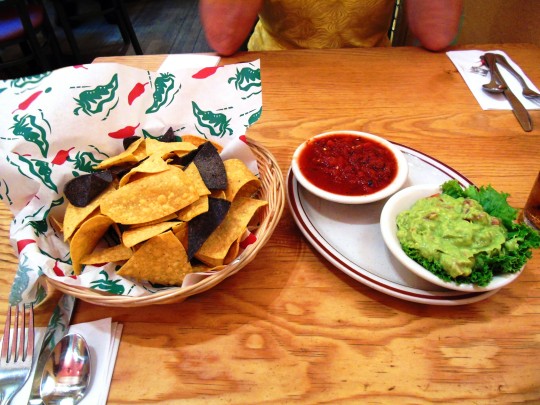

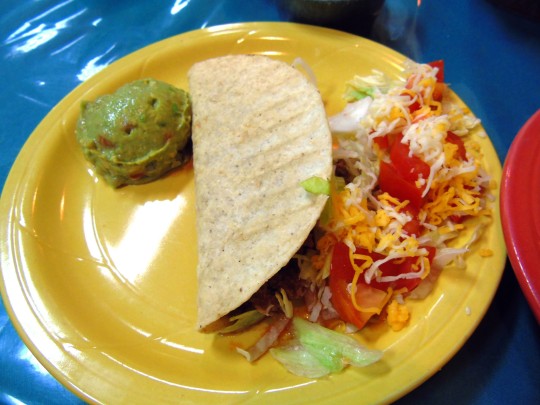
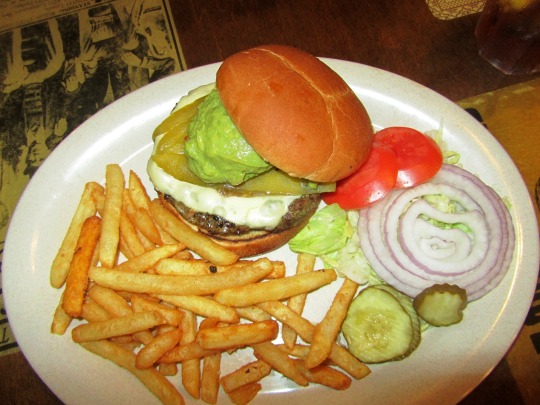
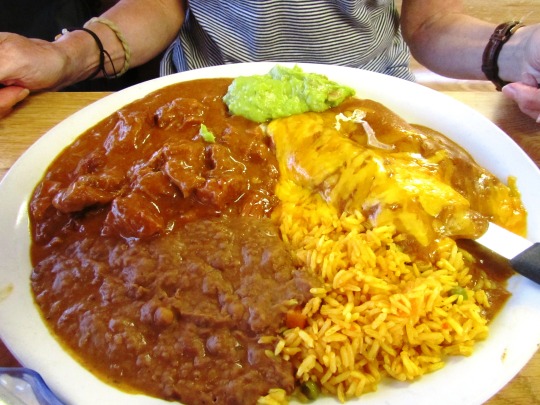



National Spicy Guacamole Day
With a base of healthy avocados and the addition of hot spices and chilies, National Spicy Guacamole Day is surely worth celebrating and remembering!
History of National Spicy Guacamole Day
Guacamole dates back to probably around 500 years ago , to the time when the Aztec Empire was in Central America. Back then, however, the guacamole of those days might not have been as spicy, although no one is really sure. It was made up of a mixture of avocados, tomatoes and perhaps also used chilies, which would have certainly made it spicy.
Although the Spaniards explorers of the time seemed to love it and tried to take it back home with them, they had a hard time growing avocado trees in their native Spain. This left guacamole to be developed in Central America, eventually appearing as a popular food item on menus at Mexican or Tex-Mex restaurants.
While the ban on Mexican avocados in the US kept guacamole at bay during the 20th century, after the late 1990s the ban was lifted. Much to everyone’s delight, guacamole then became more prolific when avocados became more affordable. In addition, the US population of Hispanics has increased significantly, perhaps bringing more demand for this delicious treat to the United States.
How to Celebrate National Spicy Guacamole Day
Getting involved in this day is loads of fun. Try out these ideas for celebrating and enjoying National Spicy Guacamole Day:
Make Spicy Guacamole at Home
Why not celebrate National Spicy Guacamole Day by giving that usual, standard guacamole recipe an authentic Mexican kick? Try out this Spicy Guacamole Recipe for fun:
Start with ripe avocados. Avocados are perfect when they are just soft to the touch, so can be bought and stored a few days before they need to be used.
For a spicy guacamole, take four ripe avocados, peel, seed and cut them into chunks. Place in a bowl and mash with a fork. Add half a teaspoon ground cumin, one large tomato, diced, one large white onion, peeled and finely chopped, two Serrano chilies, seeded and chopped, and four tablespoons freshly-squeezed lime juice.
Season to taste with hot pepper sauce, sea salt and ground black pepper. Stir together and pile into a serving bowl. Serve immediately with tortilla chips or various other delicious accompaniments. Enjoy!
Host a Mexican Themed Spicy Guacamole Party
Whether gathering coworkers together at lunchtime or getting neighbors and friends together in the backyard, National Spicy Guacamole Day is a perfect time to enjoy this treat inherited from Central American cultures.
Get the tortilla chips ready for dipping, of course. But don’t stop there! Make it an all-out party by adding in a variety of Mexican and Tex-Mex dishes that people love to eat with guacamole. Tacos. Burritos. Enchiladas. Fajitas. The list goes on and on!
Learn More About Avocados and Guacamole
In honor of National Spicy Guacamole Day, try sharing with friends and family these fun facts and bits of trivia based around the main ingredient of Spicy Guacamole:
Avocados are not only delicious; they are also a very healthy food! Their succulent, creamy-white flesh is high in nutrients and has zero cholesterol. Plus, it has the most fiber content of any other fruit on the planet.
Many people are surprised to discover that avocados actually come from the same tree family as cinnamon. (Lauraceae)
The word “guacamole” is actually derived from an Aztec word, ahuacamolli, which meant “avocado soup” or “avocado sauce”. This seems rather appropriate!
In the early 1900s, the avocado went by the strange name “alligator pear”, which probably didn’t help with its popularity. The rebranding of the name helped immensely.
Celebrating National Spicy Guacamole Day is not only a delicious activity, it’s also one that the body will appreciate as part of a healthy lifestyle!
Source
#Navajo Taco#Motorhead Burger#tortilla chips#South of the Border-Burger#salsa#Elk Santa Fe Burger#tex-mex#food#restaurant#Canada#USA#travel#vacation#Sweden#Spain#National Spicy Guacamole Day#14 November#NationalSpicyGuacamoleDay#original photography#I don't like avocados that much#guacamole is okay though
0 notes
Text
Smile! Your on the air
Doodle requests are open‼️
The series characters I can draw the best(In order) are:
South Park, Eddsworld, Creepypasta, n' SMG4
Just a some things about me(changes/updates so much)
Fictionkin of:
Tweek Tweak
Craig Tucker
Clyde Donovan
Kyle Broflovski
Kenny McCormick
Stan Marsh
Damien Thorn (South Park)
Eric Cartman
Tweek Tweak (Mirai Park)
Bill Cipher (Gravity Falls)
William Afton / SpringTrap n the rest of the versions of the suit{Pls trust me, I'm not insane anymore, I swear😭}
Michael Afton (FNAF)
Crying Child/Evan Afton (FNAF 4)
Bob
Mr Puzzles
SMG3 (SMG4)
Louise (Bob's Burgers)
Adam
Lucifer
Vox
Husk
Angel Dust (Hazbin hotel)
Tord
Tom (Eddsworld)
Kevin (Spooky Month)
Selever (FNF)
Shadow (Sonic, but not sure which specific Sonic yet)
Mannequin_Mark
Gnarpy (Regretavator)
Caine
Jax (TADC)
Jeff T. Killer
BEN Drowned
And Ticci Toby (Creepypasta)

Questioning 3

Therian but not completely comfortable to reveal more then a few of my Theriotypes, those few are a Border Collie, Island Fox, Clouded leopard, Red Panda, Some kind of Shark, and an Opossum

He/Him (Trans FTM/Masc)
13 on May 16th, Tumblr dont come after me
Christan (but excepts any religion)
Favorite Animal is Guinea pigs
2nd favorite drink is coffee
Top ten Favorite songs:
1st:Bad Habit by Steve Lacy
2nd:Hansel by Sodikken
3rd:Breezeblocks by alt-j
4th:My Band by D12
5th:Coffee by Jack Stauber's Micropop
6th:Christmas kids by Roar
7th:Noel's Lament
8th:I love you like an alcoholic by The Taxpayers
9th:Charlies Inferno by That Handsome Devil
10th:I Can't Decide by Scissor Sisters
(Dont judge me on my songs,I know i have a weird a taste in music)

A few last random shit facts 'bout me
I am very scared of alarms(Like, fire alarms)
I have Trypophobia aka fear of holes(it's very bad)
I have a love hate relationship with insects
I'm AroAce and BI
Wolverine is my all-time favorite hero(I don't care that he's technically an anti-hero/also an X-Men, he's the best)
Black and Red are my favorite colors
HTTYD is my favorite movie series
I love Scooby Doo(Especially Mystery Incorporated)
I am a mix of Introverted and Extroverted
I swear I wanna cry when stuff I've been waiting for is altered(Don't ask, I have no idea why)
I have anxiety
I freak out VERY easily
Salamanders are so cool istg
I have sensitive ears so I hate loud noises(I think I'm just a wimp)
I was in a car crash when I was 8(Luckily me and my dad were fine)
I like Diary of a wimpy kid
I have an older brother that I fight with(Imagine Rodrick and Greg's rivalry)
Some noises also make me want to bawl my eyes out(Also don't ask why, I seriously don't know)
I will 'kill' you if you look in my sketchbook(I swear you do not wanna see it, like really, you do NOT)
I have social anxiety👍
I'm seriously fucked up in the brain
I have OCD and BPD
And I have a Spotify by the name Craig-F#cker 👍
And yeah, that's all I'm willing to tell
Also please don't hate me, I can't control who I am
Thanks for reading
Random Icons :D



Okay! One last thing, sense I have started the Zombie Park series, you can ask them questions about litterly ANYTHING some stuff they might not be allowed to answer at the moment like some stuff that'll happen in the future, but if you have any questions about the AU feel free to ask
27 notes
·
View notes
Note
I came across your anti-Grishaverse posts and I like to add some of own analyses about the worldbuilding (if you're willing to go through the series again after 2021, ofc). My knowledge on Russian history and folklore is very surface level but even then I still was absolutely baffled at how bad the worldbuilding is. Especially with "Grisha" which is literally Russian for Greg???? Lol, let's just call in the Pasha Army too because why not. I've already relentlessly made fun of the name "Grishaverse" being a multiverse of Gregs so here are my favorites: Gregor-Man: Into the Greg-verse. Gregory-thing Gregory-where All At Greg, Doctor Greg and the Multiverse of Greg-ness. And it's even worse with the show when they clumsily tried to explore racism with a more diverse cast of people of Asian descent which would've been an incredible story considering Russia's rich history with the Mongols and the Turks but then they had to add in the term "rice-eater". When like, Russian cuisine includes rice. Like salmon coulibiac. So it just makes no sense at all, it's kinda the equivalent of calling an American "burger-eater". And the absence of patronymic names just because the author thought it sounded better without them (Alina Starkov is grammatically incorrect and it drove me insane, it literally takes 5 minutes to look up how to do it). I think it's great how the author wanted to do a fantasy story with some vaguely Slavic traditions but the result reminds me of Raya and the Last Dragon from Disney which, as a South East Asian person, I really dislike because it literally does the same thing of cherry picking stuff from SEAsian countries and using words from real languages that don't make sense at all, even if it's a fantasy story (I really hate the "dep la" line from the movie). It's like the author doesn't really care about the nuances of Russian society or Slavic societies in general and really only cared about the aesthetics of it (which the show didn't even do right, what the fuck are those costumes, I hate fantasy costumes that look like they were on a haute couture fashion line). Which could lead into some really awful pitfalls bordering on stereotyping and exoticization. I think it's great how she wanted to do a fantasy story with some vaguely Slavic traditions since they're pretty underappreciated but the result reminds me of Raya and the Last Dragon from Disney which, as a South East Asian person, I really dislike because it literally does the same thing of cherry picking stuff from SEAsian countries and using words from real languages that don't make sense at all (I really hate the "dep la" line from the movie). I'm just tired of authors cherry picking stuff from other cultures for the aesthetics and don't bother to really delve into said cultures and build an interesting story inspired by their folklore or history. Not to mention, it feels like the lack of research shows a reluctance to genuinely learn and fall in love with Slavic cultures, like Westerners still think they're backwards and barbaric. I certainly felt the same way with Raya.
So, I'll start with the disclaimer that I haven't seen Raya as of now so I can't really speak for it, BUT I think the one nuance I would bring to this is that I do think it's fine to use artistic licence when you're taking inspiration for a certain culture, WITH THE VERY IMPORTANT CAVEAT that you need to understand what you're taking inspiration from in the first place.
Take me, for instance. My original fiction takes inspiration (among other things) of Breton tales and mythology, since it's the region where it's believed Nimue trapped Merlin, and there is a personnifcation of Death figure that is a bit of a nod to the Ankou (who in Breton mythology is considered to be Death's henchman), a plot point that will be a callback to the Midnight Washerwomen, and so on and so forth, but none of these are a 1:1 comparison with the Ankou and the Midnight Washerwomen, simply because... well, I felt like doing something different. But you know, I acknowledge it's a nod, I'm not going to say "Lord Death in my story is like the Ankou", because that simply wouldn't be true nor accurate.
All that to say, "inspiration" doesn't save you from having to do research, and learning "why" certain things tick a certain way. Orthodoxy tends to be very oriented towards mysticism and spirituality, and we kind of get that with the cult of the Saints in the Grishaverse, but if you stop and think about religion for more than 5 minutes in that setting, it falls apart. You could get away with saying naming conventions are different in your story compared to Russian conventions (if only for the sake of being gender-neutral and more inclusive), but it becomes a problem when there are several other mistakes that native speakers can easily point out.
And then, of course, you have to take into account that LB's forte is not writing fantasy that involves politics, sociology, wars, and so on. If we're talking about something that's more "in isolation" like the SoC duology, you can get away with that. Seriously, 19th Russia was a mess - it produced absolutely amazing art that endures to this day and still inspires a lot of people (not that we see any hint of that lmao), but it was also a pretty shitty place to live if you were a peasant or a serf. The problem is, the PoV characters we have for both the Grisha trilogy and the KoS duology are essentially 21st century characters, who apply 21st century logic and solutions to a 19th century setting, and instead of that causing a certain set of consequences, it works out for them when it really shouldn't, all the while they're ignoring HUGE PROBLEMS that are right there.
If you're going to write high fantasy with big stakes, I cannot recommend enough reading and learning about history. You're writing about a female freedom fighter in an oppressive regime? Read about real life folk heroines - Boudica, the Trung sisters, Joan of Arc, Emilia Plater, Rani Lakshmibai. You're writing about a rags (or close enough) to ruler protagonist? Read about Catherine I of Russia, Wei Zifu, Basil I, Fredegund, Theodora, Honwu Emperor. What made them tick? How did they get all the way to the top? Was it charm? Guile? Brute force? Knowledge? Sheer luck? Divine intervention (don't look at me like that, go ask Joan)? How did royal courts work? What were the conflicts at the time? Why were there conflicts at the time?
"But Irina, why should I do that research? It's all magic and dragons and monsters!"
Unless we're talking about a post-apocalyptic or primitive society, you're still going to have a certain level of societal organization. How is magic viewed in your fantasy world? Is it allowed? Glorified? Despised? Where does it come from? What's your inspiration? How does this inspiration view magic? What are you going to do differently and why? Are your dragons friendly or not? Are they gods? Pets? Prey? Are we talking about dragons in Persian mythology where they represent vices? If you're going to make them benevolent, why? Are they Chinese dragons, where they're considered benevolent and wise (on that note, that's why China had a more negative reaction to Mushu when Disney's animated version of Mulan came out)? If they're just going to be mindless beasts who just think about violence, why? Why not even pick another monster if you're going to make them the big bad when they're anything but? And the list goes on.
19 notes
·
View notes
Text
erasing meaning from gangnam style
Since we’re an Asian-interest magazine, I’m going to assume that you know what K-pop is, if you aren’t vaguely familiar with it. Living through the 2000s has been a very exciting time for Korean identities in the mainstream. One could sense the time dependence of my identity in the US; in elementary school, I mostly interfaced with the American joke wondering if I had come from the North or South, which failed to consider that all of my grandparents had come from the North, and would never see their family or friends again due to US intervention. But by high school, my fortunes had turned around! At this point, we were being accosted in Marshalls by well-meaning parents who wanted to ask us about BTS because their daughter looooved K-pop, which raised another question: how did they know we were Korean in a primarily Chinese community?
But regardless of my personal bitterness, it’s important (to me) to consider how this happened. And it was a gradual change, to some extent, but really a large paradigm shift happened to change the visibility of the Korean identity in the US, around when I was in 6th grade. K-pop at this point had been what my other Korean friend and I watched on old YouTube during playdates for her to fangirl over, and for me to vaguely stare off into. It’s not like K-pop hadn’t had any international success, but it felt limited to the Korean-American diaspora and niche internet communities. “Gee” by Girls Generation is a song I would like to argue really first crossed the border into mainstream success, but I think that’s wishful thinking for an iconic song I happen to like (seriously, go watch it).
I don’t think it would be a controversial statement to say that “Gangnam Style'' was a really big deal. Statistically speaking, it topped iTunes charts in 31 different countries, it was the first video with a billion views, and it’s still the 11th most watched video on YouTube. But I’m sure just mentioning it brought you back to whatever you were doing while I was arguing about how stupid Harry Styles and Call of Duty were (I wasn’t a particularly critical-thinking middle schooler). Gangnam style was all over the radio, blessing my 7 a.m. rides to school in my mom’s Corolla, and I’d climb back onto my main after-school activity of the desktop computer to see the thumbnail on YouTube before clicking away and watching two very large buff men put together a mega burger made out of bacon instead.
Not that I had a global perspective of things at the time, but what was interesting about the virality of “Gangnam Style” is that it seemed to originate from completely different reasons across the US and its original target audience in Korea. I sensed this as one does through the American cultural hegemony, another middle schooler friend, who confided to me that it was great that Korea would be seen in such a positive light thanks to “Gangnam Style”. I wasn’t sure. I felt a little uneasy knowing that my cultural diplomat was PSY freaking out over a lady’s ass.
“It’s awesome,” the guy who oversaw our after-school pick-up told me.
“Did you know,” I said, pausing my round of Touhou 7 that I would bring in on a USB, “that it’s actually about capitalist critique?” I had learned this after Googling the lyrics because it felt a little rude to not know what a song in my own language meant. I wasn’t 100% sure what that meant, either, but they were words I knew went together according to Tumblr.
The entire video, really, made me a little nervous. Who was I in the eyes of others at school? PSY? Who even was he?
I didn’t really want to be associated with this goofy Korean man who wasn’t very handsome. I wanted to be taken seriously.
We can chalk this up to the nervous identity crisis and desire for acceptance of any middle schooler, but this difference in understanding “Gangnam Style” wasn’t just personal, but a symptom of cultural differences. Not just cultural differences, but a refusal to translate or understand the spectacle of Korean messaging in the US. We can look at this with post-feminist theory as well as the pervasive use of ironic justification in the 2000s-2010s.
Background history
In Korea, PSY was already known for being a runaway success, starting as an underground artist who began to produce hit after hit, starting in 2001 with the success of his first full-length album because of his non-traditional styling (compared to the extremely polished and conventionally attractive looks of K-pop groups), use of comedic lyrics, as well as vulgar lyrics criticizing Korean society. So “Gangnam Style” wasn’t a far departure from that.
The lyrics of “Gangnam Style” feature a guy who describes himself as “macho” and wants a girl who “looks quiet but parties hard when she goes to party,” or is “sexier covered up than a girl who is scantily dressed.” This narrator’s thoughts lean into the post-feminist sexism of the idea of a “girl who isn’t like other girls,” but PSY openly mocks the narrator’s preferences through the narrator’s parallel ideas on his own looks and perceived attractive features. This narrator brags that he also “can get crazy passionate” and “has bulging brains instead of bulging muscles.” While not necessarily as applicable in the Korean feminist scene during this time period, in the US this can be understood as the attempt to validate “alternative masculinities” that are not based on the traditions of physical power, but instead “intelligence” that became popular in the 2000s and 2010s.
The hook, “Oppa Gangnam style,” can be understood as the narrator calling himself a cool guy from the Gangnam district, which can be thought of as posturing that you’re from a rich, high-culture district. The classical comparison is to Beverly Hills, but you can also think of people who brag about going to Harvard, being snotty about New York City, or so on. It mocks the idea of constructed masculinity through materialistic attempts at class mobility with commercial goods (the Mercedes car) and images of lifestyle (lounging at a “beach,” going to high-end spas) by showing these as tasteless, corny, and crass. “Gangnam Style” critiques the materialistic culture of Korean youths, who aspire to come off as rich and upper class through elegance and “taste.” But PSY lampoons this through an overtly corny music video that claims that he is portraying these “elegant” people who ultimately are chasing after masculine ideals of being considered attractive and meeting women who are feminine ideals in aesthetics. These men treat women like objects because they believe that they can achieve their masculinity through materialism and class.
But how many Americans know that “Gangnam Style” is a satirical critique of Korean materialism?
At the risk of being unfair, my two examples certainly didn’t know. Most other K-pop music videos have English captions, including the videos that were released before “Gangnam Style” caused a huge growth in interest in the genre. But “Gangnam Style,” 10 years after it’s been released, still has no translations on the video itself. Which seems strange since so much of the music video is guided by the lyrics. If the lyrics are lost on the American audience, where does the international appeal come from?
International Appeal
The answer is that the themes behind the lyrics were never part of the appeal. Most of the appeal comes from the music video. T-Pain tweeted, “words cannot even describe how amazing this video is...”, which is directly linked to the skyrocketing popularity of the video as news sites began to cover it. So the virality of “Gangnam Style” in the US must be studied through the lens of pleasure removed almost completely from the lyrics. Taking the music video at face value, then, we can get a different reading using post-feminist themes of irony, the choice of objectification, masculinities, as well as the construction of the consumer through advertising and sexuality.
The positive response to “Gangnam Style” has generally been attributed to the absurdist nature of the scenes in the video, as well as the dance itself. The Washington Post claimed that “'Gangnam Style' has made an extraordinarily stupid-looking dance move suddenly cool,” ignoring the fact that the dance was chosen to look stupid in the first place.
The Sydney Morning Herald claimed that the video “makes no sense at all to most Western eyes" and it "makes you wonder if you have accidentally taken someone else's medication."
The deliberate removal of meaning from the video is reminiscent of Adorno’s concept of the culture industry. The video loses the power of “psychology” over the “structure” of the music video. The Western viewers thus avoid the confrontation of culture in the music video by brushing the visual themes aside as “meaningless.” So it becomes “uncritical fun” and viewers can thus transcend the need to even know the lyrics. There is a racial aspect to this as well—the Korean-focused message is brushed aside since it “makes no sense at all” to a Westerner. So the minority Korean message is subjugated and destroyed, made invisible by mocking the silly Asian man doing his silly dance. In this way it becomes pleasurable to an audience that may otherwise be alienated by its themes.
Another way “Gangnam Style'' is understood in the US is through sexuality, as advertisements and other video forms have already created this sexualized “set of images.” It is likened to LMFAO, probably in reference to “Sexy and I Know It” for their satire of the grandstanding of masculinity. But LMFAO creates satire through the focus on male genitalia and body humor. The comparison of “Sexy and I Know It” can be understood by “Gangnam Style'' being seen as a video about a satire on male sexuality instead of consumerism, with American viewers focusing on the nudity and Noh Hongchul’s pelvic-thrusting dance. The latter dance is actually a trademark of Noh Hongchul’s comedy acts, but the American audience doesn’t know this, and thus interprets it in the language of images they are familiar with. As Sut Jhally puts it in “Advertising, Gender and Sex: What’s Wrong with a Little Objectification?”, the viewers are informed through the “system of images'' that are present in American society, and also happen to be obsessed with “gender and sexuality.” The one English lyric in the song is “Hey, sexy lady”—which adds to this perception and leads to a later ironic reading of other scenes where women are sexualized.
So of course there is no closed captioning—PSY understands the appeal for American audiences includes taking the lyrics as nonsensical and meaningless.
Another distinctly American reading occurs for the objectification of women, notably the yoga lady image that became the icon of “Gangnam Style.” With the context of the lyrics, it’s clear that this is a direct critique of the sleazy nature that comes from commodifying women. The women present in the music video are also traditionally beautiful, with the woman who seems to be interested in PSY in the music video being an idol herself. Without the context of the lyrics that deconstruct the delusion of a romantic, classy lifestyle where women only have value from being traditionally beautiful, however, this scene is transformed into the post-feminist “irony” that Rosalind Gill talks about in her paper “Postfeminist Media Culture.” American viewers thus participate in the sexualization of these women by the constructed “silliness” of the music video. By making “Gangnam Style” absurdist and bereft of meaning, PSY’s yoga lady scene is seen as “funny” and “subversive” towards sexism, even though the original critique is on materialism and commodification.
The real absurdity is the American response to “Gangnam Style” as a force to “understand Korea” in the US by Obama, and even as a way to hail world peace by the UN.
Even Noam Chomsky was part of an MIT parody of “Gangnam Style,” partaking in “mindless fun.” I felt a little disturbed at the time that this might be the image of Korea constructed for the American mind as actual interest in the culture was swept away by the exaltation of the video as nonsensical and meaningless. As a 6th grader, this wasn’t how I framed it to myself, but the way the Western viewpoint became dominant over the original meanings of the video signaled to me that my Korean experience would become destroyed and overwritten by the white, American viewpoint. The post-feminist mindset also created a post-racial mindset where irony was used to mock other cultures, setting a white gaze in media much like the male gaze asserted by Laura Mulvey in “Visual Pleasure and Narrative Cinema.” That’s why so many TV shows were able to partake in blackface (like The Office and 30 Rock, just to name a few) and take pleasure in unashamed racial violence—to the white gaze, it is funny, because the original meaning of racial violence can be stripped away.
References
Gill, Rosalind. “Postfeminist Sexual Culture.” The Routledge Companion to Media & Gender, https://doi.org/10.4324/9780203066911.ch54.
Horkheimer, Max, et al. Dialectic of Enlightenment. Stanford University Press, 2020.
Jhally, Sut. “Advertising, Gender and Sex: What's Wrong with a Little Objectification?” (1989).
Mulvey, Laura. Visual Pleasure and Narrative Cinema. 1999.
5 notes
·
View notes
Text
my travel bucket list of mostly small/insignificant things:
eat an olive garden breadstick
visit the zeitpyramide as one of the blocks is being put down
see a rat king in a museum (preferably the 32 rat one in a museum in altenburg, germany)
go to home depot
visit waffle house, burger king, in and out
go to the pizza hut in cairo with a view of the pyramids
go to a border where i can step between several different countries. bc i think it's cool that in most other countries, you're able to cross into a whole nother country while staying on the same land
visit the frozen fish in the tunnels in antarctica that go to the exact south pole (the frozen fish was there in 2007 when encounters at the end of the world was filmed there, at least
Bass Pro Shop pyramid
that big metal bean (in ?boston? I think?)
California redwoods (not that weird they're really cool)
Austin TX bat bridge
9 notes
·
View notes
Text
healer.
with @lgcsejun◞ ✰
— in seoul, south korea.
kiha was certain of one thing— he was not going to be winning any awards in the department of friendship for this quarter gone. perhaps a demerit point or acknowledgement of his shitty actions if he was lucky. he reminds himself constantly that he doesn’t deserve the kind, good and loving people he has in his life. kiha wants to say he’s surprised when his best friend takes him up on his offer to head into seoul after hours for a late night burger date, as kiha puts it. but he isn’t— because that was the kind of person na sejun was. yoo kiha reemerges from the shell he’s spent couped up in for the past three or so months, opening himself back up to the people around him. kiha hadn’t only punished himself these past three months, but all of the people he held closest to him— the people he hadn’t intended to nor wanted to hurt.
he couldn’t remember the last time he spoke to sejun— anything beyond a hi, bye or goodnight had become too much in the span of a week and kiha had resorted to vacating the dormitory at any given chance. evading any and all attempts sejun might of had at talking to him on a more intimate or emotional level. he wishes he could of actually spoken to sejun— gotten out of his own head and opened up to the one person who might possibly provide him with a slither of mental reprieve ( minus haley, of course ).
kiha opts to walk— wanting to embrace the remnants of the crisp winter air, as the cold withers away, replaced by budding blossoms which are soon to line the streets with blankets of baby pink petals. he had suggested this all through text message— the words coming easier through typed word than spoken. kiha buries his hands a little deeper into his jacket pockets as they round the corner of a backstreet, approaching a small, american style burger joint; it’s neon lights splashing rainbows onto the pavement bordering it’s storefront.
6 notes
·
View notes
Text

1 | 2 | 3 | 4 | 5 | 6 | 7
@thenaluarchive Nalu Week 7-part story
In the town of Kailua Kona, a 40 minute drive from Lucy’s Waikoloa condo, it was a typical small city for the most part. Hills to the north, ocean to the south, coffee farms to the east, and open fields to the west. Supermarkets, shopping centers, restaurants, and more kept this tourist town’s natives supplied. But the actual “tourist” area really consisted of a single road called Ali’i (king) drive. This is where hotels and souvenir shops mixed with historical sites such as Hulihe’e Palace, then condos and beaches completed the rest of the journey. At the heart of Ali’i drive on any given day, one could find throngs of tourists walking along a mile stretch condensed with lots of shops and eateries. It was here that Lucy found a public parking lot and the friends headed out for the day.
The group stayed together as they went from store to store, and the girls warned the guys about holding off on buying anything yet.
“Why?” Gray questioned because he wanted to pick up souvenirs for his girlfriend back home.
“Trust us,” Levy simply replied. “You’ll realize why at the next store.”
And sure enough, Gray found the exact same shell necklace for cheaper at the next store. Moving along, the girls ducked into a crystals store to look at all the pretty gems. The boys, of course, were bored. To them it’s just colored rocks, big deal. So, while Lucy and Levy looked at the jewelry, Natsu and Gray stood just outside the door.
“Pfft, look at that,” Natsu pointed at a nearby table. “$20 for a lava rock!”
“Maybe we should pick up a handful and try to sell them too,” Gray suggested sarcastically. “Pay for our tuition.”
That brought on a laughing fit from Natsu, which didn’t end until the girls heard him and shooed them away from the store. At least they were having fun, but lunch time was coming up so the group headed further down past the tourists section to a small shopping center called Coconut Grove. Here, next to a sand volleyball pit was a two-story building, and upstairs was a restaurant called Fosters Kitchen.
Once the waiter arrived, Lucy first ordered the seafood puff pastry which she insisted was to die for! Next for the main dishes, Natsu chose a Cajun shrimp pasta, Levy a fresh fish burger, Gray a cheddar burger, and Lucy the blackened shrimp and grits.
“Wait, people in Hawaii actually eat grits?!” Gray laughed. “I thought it’s just a southern thing.”
“Hey, I like cheesy grits okay!” Lucy pouted and shrugged. “A friend from North Carolina turned me onto it!”
“Wow, dude,” Natsu chimed in with an annoyed tone, “no need to tease Lucy if she likes something different.”
Gray put his hands up in defense. “Calm down lover boy, I was just joking.”
“What?!” Both Natsu and Lucy stuttered out as their faces turned crimson. “He’s/she’s not…” they clammed up and dug into their meals to avoid any more teasing, which only enticed Gray and Levy to chuckle more.
After lunch, with belly’s full, the group started walking back to finish shopping. Gray wanted to find a few more souvenirs to take back to California, while Levy wanted to check out a place that sold chocolate covered Kona coffee beans. But since Lucy and Natsu were done shopping for the day, they agreed to all meet up on the stone wall that ran along Ali’i drive and bordered Kailua bay.

See Original art post @kiliinstinct here
To keep cool while waiting, Lucy and Natsu grab a treat from One Aloha Shave Ice company.
“I’ve never tried something like this,” Natsu remarked as they sat down on the wall. “Flavored snow cones yeah, but they put toppings on these things here?! These lychee and mango toppings are awesome!”
“I like adding li hing mui powder when I want something salty and sour.” Lucy took a bite of her shave ice. “But today, just the classic rainbow.”
“Oh, yeah,” Natsu mumbled, with a mouth full of shave ice, “I learned that stuff goes good with tequila.”
“Omg,” Lucy playfully pushed on Natsu’s shoulder with a laugh, then instantly quieted down and looked away. Her body suddenly felt warmer and her cheeks flushed— but definitely not from a sunburn.
“Lucy?” Natsu questioned in a softened tone.
“Hmm,” she responded while pretending to focus on her shave ice.
But while looking down, Lucy’s hair kept blowing into her face. Natsu chuckled quietly and reached over, tucking the errant strands behind her ear. He wasn’t blind. He noticed the effect he was having on her. So, he gently grabbed her chin and turned her to face him.
“Natsu?” Her eyes communicated a feeling of concern and hope.
Caressing her cheek, “I’ve wanted to do this for awhile,” he spoke as he leaned in to place a lingering kiss upon her lips.
Lucy closed her eyes and melted into it with a sigh. She’d had a crush on Natsu for so long, but had never thought he actually felt that same way too! His lips felt amazing on hers…
When they pulled apart, Natsu continued caressing her cheek as they simply gazed into each other’s eyes. “You know,” he chuckled, “none of my flirting was working, so I had to just go for it, fingers crossed.”
That made Lucy laugh. “You’ve got my attention now.” She smiled, and initiated a second kiss.
A couple seconds later, Lucy and Natsu hear the sounds of clapping, and find their friends standing below the wall waiting for them.
“Congrats you guys!” Levy teased, “and Gray that means I won, you owe me $5.”
“Pfft,” Gray griped but gave it to her anyway.
“Won what?” Lucy asked in an annoyed tone.
“Who would make the move first.” Levy answered. “I said Natsu, so I won.”
“Oh my god! You guys are too much!”
#nalu#nalu week 2022#simply nalu 2022#fairy tail#natsu dragneel#lucy heartfilia#part 4#the art is a commissioned piece for this story#the rock thing is true#a shop was actually selling plain chunks of lava rock#but warning never take rocks out of Hawaii#something bad might happen
26 notes
·
View notes
Photo

Olive Tree Villa in #Yzerfontein, South Africa by Gavin Maddock Design Studio @gavinmaddockdesignstudio. Read more: Link in bio! Photography: Adam Letch @adamletchfoto, Burger Engelbrecht The stylishly designed guest house is located on the west coast 90kms north of Cape Town – bordered by a nature reserve adjoining the ocean. Taking full advantage of the ocean views and responding to the coastal dune context, Gavin Maddock has designed a private get-a-way with a sense of calm, understated luxury. The project was awarded Winner of Best Guest Houses 2019 in South Africa… #casa #southafrica #архитектура www.amazingarchitecture.com ✔ A collection of the best contemporary architecture to inspire you. #design #architecture #amazingarchitecture #architect #arquitectura #luxury #realestate #life #cute #architettura #interiordesign #photooftheday #love #travel #construction #furniture #instagood #fashion #beautiful #archilovers #home #house #amazing #picoftheday #architecturephotography #معماری (at Yzerfontein, Western Cape, South Africa) https://www.instagram.com/p/CkGzDqPugxb/?igshid=NGJjMDIxMWI=
#yzerfontein#casa#southafrica#архитектура#design#architecture#amazingarchitecture#architect#arquitectura#luxury#realestate#life#cute#architettura#interiordesign#photooftheday#love#travel#construction#furniture#instagood#fashion#beautiful#archilovers#home#house#amazing#picoftheday#architecturephotography#معماری
17 notes
·
View notes
Text

This whole thing (I believe) is likely a giant nothing burger and distraction. Anyone who has been in the “planning sections” of the military (I have) knows we have oplans upon oplans for every bizarro scenario imaginable. Schwarzkopf famously said he basically dusted off the oplan to execute what became Desert Storm. We have oplans for the defense of South Korea should the north attack as well as the counter attack to the Chinese border. That might alarm civilians and those who haven’t thought this out but it’s what the military does. To great frustration oftentimes. It’s common knowledge. We no doubt have the same oplans for Iran scenarios. The only issue with them would be intent. eg Comrade Gen Milley alerting the CCP or Iran to our intentions or plans. And Milley basically did this. Trump talking of the plans existence is just banter…the plans exist. Always have. Always will. It’s common fucking knowledge. And they are constantly updated.
2 notes
·
View notes
Text
Exodus South
With the Easter holidays just before ANZAC day, I took advantage of the numerous public holidays scattered throughout April to take four days of annual leave between Easter Monday and the next long weekend. Why, I hear you ask? Well, it was to ensure that I could enjoy as much time off as I could. And finally get to enjoying some time exploring the great outdoors. A homebody, I might be, but a chance has finally arisen for me to cross state lines and to check out if Melbourne truly was the most liveable city (at least from 2017 standards) and to also possibly pick up some nerdy merchandise to feed the gaping void in my soul.
After all, I never denied I was a materialistic girl.
The problem, of course, was picking my travelling companions. Before my stepfather returned to Australia, I was hoping for some bonding time with just my mother and I. We could go down to Melbourne, the two of us, and enjoy what the city would offer. Failing that, I’d simply go my own way and she could do whatever she preferred.
Unfortunately, my mother’s husband testing positive to COVID-19 prior to the trip only served to further sour our relationship. Mostly because I could not deal with his selfish tendencies during our period of self-isolation and his blatant disregard for the health guidelines. Then, of course, there’s the other baggage I won’t go into. But, let it be known, that ever since they got married in Malaysia (a wedding to which I wasn’t even invited to), I’ve tolerated his presence in my mother’s life.
And so, after much hewing and hawing, the trip would remain as it was. For one glorious moment, I had prayed he would decide to stay back and it would just be my mother and I. Alas, it was not to be.
So, eschewing the convenience of a one hour flight and unconcerned about exorbitant petrol prices, we drove down. On the first day of our journey, we stopped several times for toilet breaks, petrol or food. Our first stop was at Sutton Forest. A most popular place to rest before heading all the way to Canberra. The next was Gundagai where we enjoyed a lot of Hungry Jack’s latest fried chicken range of burgers. Disappointed that we couldn’t try anything else, we continued the long drive down to Albury - stopping briefly at Wagga Wagga because the outback city had piqued my mother’s curiosity and she wanted to take a photo of an old post office.

Instead, we got a hotel that was aptly named the Mantra Pavilion Hotel with a conical roof. Of course, we didn’t go in. Just take snaps of it from the outside before we continued the drive to Culcairn and finally to Albury.
After staying the night, we continued our trip down to Melbourne. Of course, not without stopping first at Noreuil Park Foreshore to stare at the Murray river (and the border between the states of New South Wales and Victoria) and heading up Monument Hill to see both the twin cities of Albury-Wodonga.

Despite the early start, we didn’t arrive at Melbourne until well past noon. At the very least, we stopped briefly on the road for a small lunch that consisted of a chicken wrap and a few crackers. As soon as we checked into our luxurious apartment, I was out pounding the pavement. There was little time to lose. While my mother and the stepfather decided to go for an early dinner, I was much too concerned with stopping by Critical Hit, Minotaur and One Stop Anime to feed my desire for all things nerd.
Thankfully, they were all quite close to each other in the centre of Melbourne. Better yet, our hotel wasn’t too far. By the time the shops were all closed, I had gained the Octopath soundtrack, a new book that had been recommended by BookTuber Daniel Greene (while also scoping out the manga heavy sections that were also peppered with plenty of pop vinyls) and some breakfast for the morrow from Breadtop.
I also jammed my finger when trying to exit the Breadtop, but the bruising wasn’t too bad.
So ends part one of my Melbourne adventures. Tune in next time to read all about my disappointment that there were no keyblades on displays or the fact that One Stop Anime was so confusingly placed in some corner in the wall. Okay, I kid. It wasn’t that bad. And if one does follow the most popular anime shows, I’m sure there would have been plenty to love. I, unfortunately, haven’t fallen for anything beyond my beloved Detective Conan. May Kudo Shinichi reign supreme forevermore.


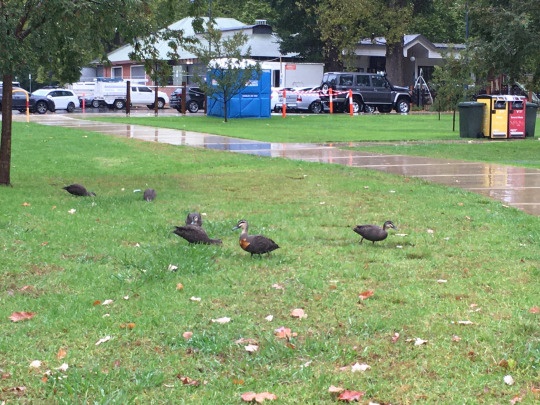
3 notes
·
View notes
Photo


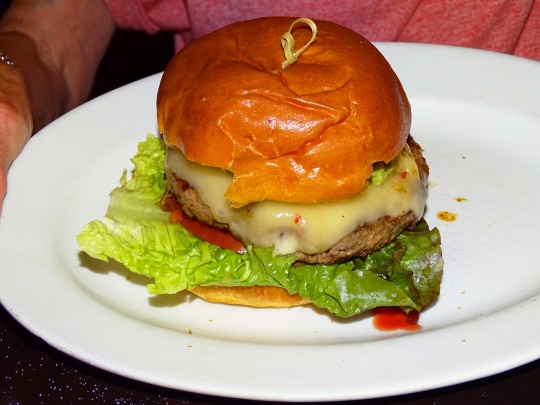
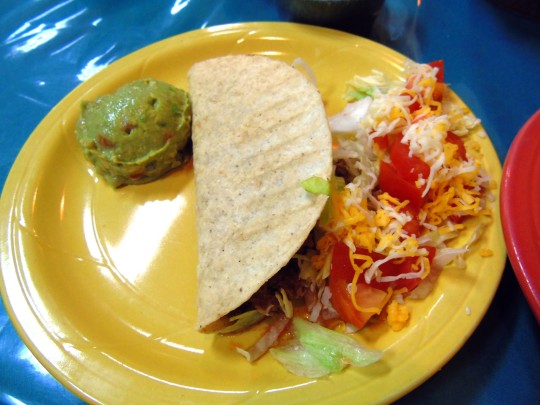

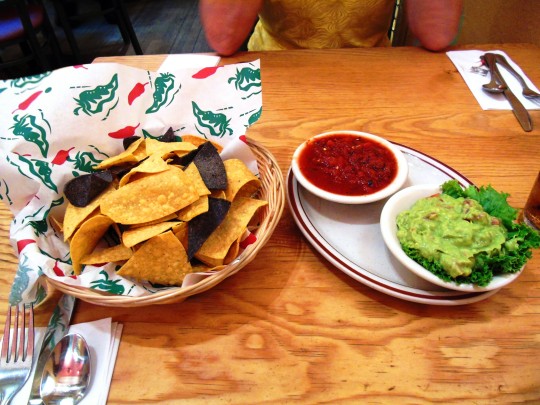
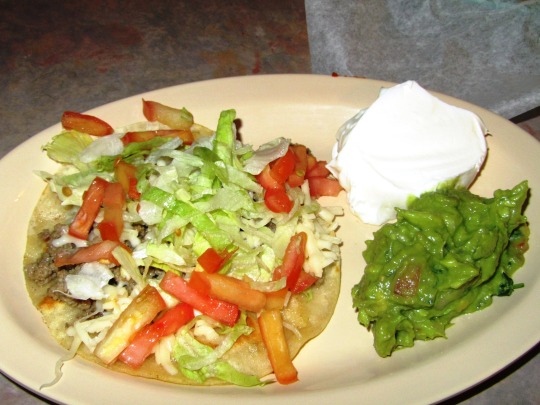


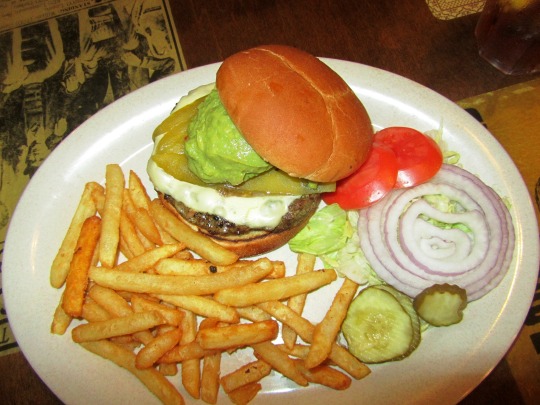
National Avocado Day
Today we celebrate avocados! A fruit that grows on trees, avocados have a tough skin with a greenish or yellowish flesh inside, as well as a large seed. They can range in size from that of a hen’s egg to up to about four pounds, depending on their variety. Some major varieties are Hass, Fuerte, Bacon, Zutano, Rincon, Mexican, Guatemalan, Booth 8, Booth 7, Lula, and Waldin. They are native to Mexico and to the area south of there down to the Andes Mountains.
The Aztecs are known to have eaten avocados. For a long period of time, avocados were only eaten in Central and South America and in the Caribbean, where they gained the name “alligator pear.” In 1833, horticulturist Henry Perrine became the first to plant avocados in Florida. They were first planted in California in the 1880s. By the turn of the century, orchards were established, and avocados first gained commercial importance.
Avocado dishes began appearing in Mexican recipe books and restaurants in the 1920s. During this time, avocados really weren’t popular in the United States except for in California, Hawaii, and Florida. More Americans began embracing avocados when they became a popular salad item in the 1950s. Guacamole also gained in popularity, largely on account of the El Torito restaurant chain. In the twenty-first century, the popularity of avocados has continued to increase. According to the Hass Avocado Board, avocado consumption doubled between 2005 and 2015 and quadrupled between 2000 and 2015. Today, the biggest growers of avocados are Mexico, Chile, the Dominican Republic, Indonesia, and Columbia. They are also grown in Florida, California, Hawaii, Australia, Brazil, South Africa, Israel, and some Pacific Islands.
Avocados are a good or high source of vitamins C, E, K, B1, B2, A, and potassium, and they are a rich source for omega-3 fatty acids. They are high in monounsaturated fats that are healthy for the heart. One of these fats, oleic acid, is also healthy for the skin. Not only can avocados benefit the skin by being ingested, but they can be used topically. The Aztecs used them in skin masks, and by the early twentieth century, they were being used in facial cleansers, creams, and lotions. This is still the case today.
Avocados are used in savory and sweet dishes all around the world and are almost always eaten raw. One of the most common uses for avocados is guacamole. It is made by mashing them and is used as a dip for tortilla chips. Avocados are spread on toast and tortillas, eaten in salads, and even enjoyed as desserts. In some countries, they are used in milkshakes or other drinks, and sometimes in ice cream. Avocado oil is used in salads and dips as well.
National Avocado Day was founded by Model Meals, a meal delivery service that focuses on sustainable agriculture and healthy eating. They work with local organic farmers and growers to create menus. Avocados are often used, and they decided to create a holiday because they liked them so much. They chose July 31 as the holiday’s date because it is during peak avocado season in California.
How to Observe
Celebrate the day by eating avocados! There are many varieties you could try and many different ways you could eat them. You could have some guacamole and chips or spread avocado on toast. You could also use avocados to make a salad or a dessert. Some restaurants give away free guacamole today, so keep an eye out for that. Another idea could be to use oils and lotions made with avocados.
Source
#Avocado Ranch Burger#Texas Avocado Burger#Fried Chicken Sandwich#salsa#sour cream#Guacamole#fajitas#I don't like avocados that much#I can eat avocados but#guacamole is okay though#tortilla chips#Elk Santa Fe Burger#South of the Border-Burger#fries#travel#vacation#tourism#National Avocado Day#NationalAvocadoDay#31 July#USA#Canada#Sweden#original photography#Avocado Salmon Tartare
1 note
·
View note
Text
Top 8 Restaurants in Dubai: Best Places to Enjoy Dinner in Dubai
Dubai is a city that celebrates world cuisine. It is a city that is a paradise for food lovers. The place is filled with restaurants, cafes, and eateries that serve a variety of foods and cuisines. One of the reasons is that expats from all over the world live in Dubai. Also, the city being a major tourist destination and offering flavors from across the globe is a major way of attracting tourists. But it is not just about the flavors. Rather, the restaurants in Dubai strive to offer a complete experience with the right ambience, vibe, view, and aesthetics. While there is no dearth of amazing restaurants in the city, we present you with the top 8 restaurants in Dubai.
Ossiano

Ossiano is one of the best fine dining restaurants in Dubai, perfect for couples on a date. One of the 8 restaurants of Hotel Atlantis the Palm, the setting of the restaurant makes it extra special. As indicated by the name of the restaurant, Ossiano is a restaurant inside an aquarium. In short, you get to enjoy the joys of the underwater world filled with sharks, stingrays, and a variety of other fish while dining. The brainchild of Chef Gregorie Berger, the restaurant's theme extends to the food too. You will get to enjoy some of the most delicious and juiciest seafood dishes here along with some meat dishes. While a-la-carte is available, you can also choose the tasting menu, which involves 11 courses, also known as waves. The restaurant also serves a variety of cocktails and drinks to satisfy your palette.
At.Mosphere

What makes At.Mosphere special is that it is the tallest restaurant in the world. Perched on the 122nd floor of the tall Burj Khalifa, it is one of the best restaurants in Dubai with a view. While the view is great, the experience is pretty much awesome too. The restaurant serves a European fare leaning towards the French cuisine. The best part is that you can visit the restaurant for breakfast, lunch, high tea, and dinner. Evenings are the best time to visit this restaurant as you get to enjoy a glorious sunset along with some delicious food and drinks. The decor of the restaurant is also equally mesmerizing. The textured wallpaper, dramatic flooring, velvet and leather seating, and beautiful lighting and fixtures make the place look gorgeous. It is important to dress in smart and elegant attire if you are dining at At.Mosphere.
Local House
As a guest of the Emirate of Dubai, it will not do if you return from the city without trying an authentic Emirati meal. And we are not talking only about the Shawarma. There is much more to Emirati cuisine apart from this popular meal. There are plenty of restaurants that serve Emirati dishes, but the Local House is one of the most popular. Right from the building to the setting of the restaurant to the numerous dishes on its menu, everything will take you back to the times long gone. Local House resides inside a traditional Emirati home in the Al Fahidi Neighborhood. The sandstone walls, colorful wall art, and other pieces of decor give it a unique look. While there are plenty of authentic flavors to try here, the camel burger is the most popular here. It is also the first place to have introduced this delicacy. The menu consists of seafood dishes, salads, starters, sandwiches, and kebabs. The restaurant serves right from breakfast to dinner. There is also a separate dessert menu, but the camel ice cream is something you should not miss.
Nando’s
If you are looking for the best family restaurants in Dubai, Nando’s is a place you must try. Although Nando’s has numerous branches in the city, each one of them has a casual and easy-going vibe, perfect for families with little children. Plus, the menu is something loved by kids and adults alike. Nando’s is a South African brand that brings together Portuguese-styled grilled chicken with the most amazing peri-peri, a flavor born in the borders of South Africa (in Mozambique). Peri-peri chicken wings, thighs, and legs are the most popular delicacies here. To taste all the chicken dishes, go for the chicken platter. The place also offers pitas, wraps, burgers, salads, beverages, and several breakfast options. Although chicken is the star of the menu, Nando’s also caters to vegetarians.
Indego by Vineet

As most Dubai residents are Indians, the presence of Indian restaurants in the city is not at all surprising. You will find several Indian restaurants by Michelin star chefs here, but Indego by Vineet is one of the best. Located inside Grosvenor House, it is one among many Dubai Marina Walk restaurants. What makes this restaurant truly special is that the chef has stayed true to the Indian flavors and dishes but presented it in a truly international style. Here you will find the most popular Indian street food and all other traditional foods in an international style, fit for fine dining. Burrata Pakoda, Kheema-Egg Fry, Quinoa Dosa, Beetroot Galauti, Chicken Maharani, Sigdi Butter Chicken, Dum Parada Chicken Biriyani, etc. The menu consists of dishes inspired from different corners of India.
Ravi Restaurant
Most people believe that they need to spend a lot of money to have a delicious meal in Dubai. But this is not true. In fact, there are small casual dining places in the city where you can have a hearty meal without spending too much money. Ravi Restaurant is one of the best affordable restaurants in Dubai. Ravi Restaurant brought Pakistani flavors to Dubai in 1978 when Dubai was a simple town. Today, decades later, Dubai has become an ultra-luxurious city, but Ravi Restaurant remains a place loved and trusted by the residents. The restaurant is known for its delectable biriyanis, but people also love the place for its kebabs, curries, etc. You will also find plenty of vegetarian options on the menu. Ravi Restaurant serves breakfast, lunch, and dinner. It is a place to go to if you want to enjoy delectable food without the frills of decor and ambience.
Zuma

If you are craving some sushi, there is no better place than Zuma to enjoy the same. Zuma is located in Dubai’s financial district, next to the Burj Khalifa, one of the best attractions in Dubai. It is frequented by the corporate crowd for business meetings and even to wind down after a hard day at work. Zuma is not just known for its appetizing Japanese cuisine but also for its unique Japanese way of dining called izakaya (based on sharing a selection of dishes). The best part about Zuma is that you can enjoy all the authentic Japanese flavors packaged in a more international and sophisticated manner. Apart from the delectable sushi, you will also get to enjoy miso-marinated black cod, fresh sashimi, sesame spinach, smoked chili soy beef skewers, wild mushroom rice hotpot, etc. The sushi and Rabata counters of Zuma are the most popular here.
Pierchic

Located on a pier perched right on the Mediterranean Gulf, Pierchic is undoubtedly the most romantic restaurant in Dubai. The seating of the restaurant gives you uninterrupted view of the city and the sea and of the sail-shaped Hotel Burj Al Arab. While the view and the setting of the restaurant is nothing less than awesome, the food is also equally good. The restaurant offers a range of mouthwatering seafood and Italian delicacies. The head chef Beatrice Segoni has handpicked the choicest dishes to provide the patrons with a memorable experience. You can order from the a-la-carte menu of the restaurant or go for a blind tasting menu, where you would be served six courses of authentic Italian dishes. Whatever you choose, Pierchic promises a romantic evening (or even an afternoon) for you and your partner.
The 8 restaurants mentioned here just skim over the list of best restaurants in Dubai. The city has so many options that you will be spoilt for a choice. But if you feel overwhelmed with all the choices you have, pick the one mentioned here for a memorable dining experience during your Dubai visit.
0 notes
Text
Christmas markets in Italy and Germany
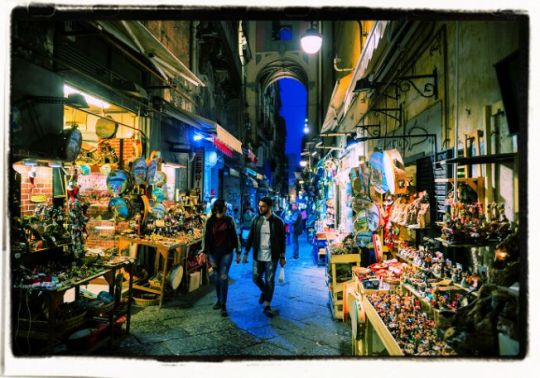
Christmas markets in Naples
Christmas markets in Italy and Germany, in Bolzano, Trento, Verona, Milan, Florence, Rome, Naples, Berlin, Nuremberg, Hamburg, Dresden, Cologne, Heidelberg, and many more
As Christmas gets closer, festive markets pop up all over Italy, offering high-quality gifts, decorations, excellent food, and wine. For many Italian cities, Christmas markets are a new tradition brought from Northern Europe, but some regions offer a more authentic experience. For example, the South Tyrol region next to the Austrian border boasts many historical and established Italian Christmas markets against the backdrop of breathtaking mountains.
Famous Italian Christmas markets run in major cities like Turin, Milan, Florence, and Verona. Florence Christmas market is centered around Piazza Santa Croce with a strong feel of German traditions. Christmas markets (Mercatini di Natale) in Milan are scattered across the city and offer a great program full of entertainment and Christmas shopping.
Bussolengo Christmas Village in the province of Verona, known as Il Villaggio Di Natale Flover, is not to be missed. This tradition began in 1996 and the area covers over 7,000 sq m of indoor space. The village impresses with the lavish Christmas decorations, hand-crafted goods, and seasonal foods, the best of which is the Xmas Burger. The most awaited of all events is the dinner with Santa Claus, usually held every Thursday and Friday between late November and mid-December.

Christmas markets stalls in Italy
Aosta Valley in northwest Italy, bordering France and Switzerland, hosts one of the most picturesque markets - the Marché Vert Noël. Over 50 chalets offer sweets and pastries from the region, as well as, ideas for unique gifts. The Aosta Christmas Market is also famous for handmade candles and soap, Christmas decorations, ceramics, and antique furniture. There is also clothing made from natural fabrics like wool and felt, the region is also known for its beautiful lace. This market takes place at the archaeological site of the Roman Theatre.
The town of Bolzano in Trentino-Alto Adige in South Tyrol, bordering Switzerland and Austria, hosts a Christmas Market famous all over Italy. With the picturesque snow-capped Rosengarten Dolomites surrounding the medieval town, it's hard to imagine a better Christmas destination.
Bolzano Christmas Market (Bozner Christkindlmarkt) is brightly decorated with traditional garlands and lights. The scents of pine, roast chestnuts, and spices fill the streets. Held at Piazza Walther, Bolzano Christmas market offers handmade wood and glass gifts, ceramics, and seasonal treats.
Tyrol town of Trento is home to a magical Christmas Market with a cozy and festive atmosphere, unique gifts, and traditional foods. About 100 wooden chalets cover two medieval squares: Piazza Fiera and Piazza Cesare Battisti. Local craftsmanship will show their best products and gastronomy. Try delicious local specialties such as treccia mochèna pastry, polenta brustolada, canederli, and parampampoli.
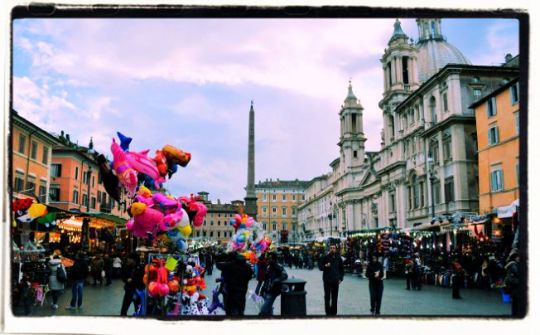
Christmas markets in Rome
The town of Pordenone in the Friuli-Venezia Giulia region features a large Christmas market with concerts, shows, and games during the whole season. Check out the life-size nativity scene with hand-carved wooden statues and other attractions on Piazza XX Settembre and Corso Garibaldi in Pordenone.
The Christmas markets in Rome take place on different squares and near different attractions. Even though Rome doesn’t really know winter temperatures, with all the Christmas illuminations and Christmas decorations you will still get this special Christmas feeling in Rome. On some Christmas markets you can find vintage carousels and since most markets are located next to famous attractions there is a special atmosphere on Roman Christmas markets.
The Roman Christmas market at Piazza Navona is one of the most famous markets in Rome. You can find local sellers, toys, street musicians and artists, several nativity scenes and amusement rides. All that in front of Bernini’s Fountain of the Four Rivers and the church Saint Agnes in Agone.
Naples is famous all over the world for its Nativity scenes, in particular San Gregorio Armeno Street is the way of the Neapolitan Presepe here are the workshops of the artisans of the Nativity, where they build the wonderful figurines that make up the Neapolitan cribs.
San Gregorio Armeno is in fact dedicated to Christmas at any time of the year, in fact the artisans always work on the preparation of the typical terracotta figurines and the huts of the cork cribs, but during the month of December the street becomes a real market that has Christmas as its theme, offering the best of itself in a truly suggestive atmosphere.

Christmas markets in Berlin
Another place to check out during the Christmas season is Como's Città dei Balocchi (City of Toys) from late November until early January. For over a month the city transforms into a fabulous nativity town entertaining both kids and adults. Check out the Como Magic Light Festival, Christmas Market in Cavour Square and Plinio Street, Santa Claus’ Post Office, and, of course, the ice-skating rink. The main festivities traditionally begin on Christmas Eve with the arrival of Santa Claus in Piazza del Duomo. The last celebration takes place on Epiphany Day again in Piazza del Duomo when a mythical old lady Befana descends from a rooftop.
Christmas markets in Germany. From Nuremberg and Hamburg to Dresden and Cologne, the run-up to Christmas sees town squares all over Germany filled with festively decorated huts selling handcrafted goods and delicious food.
When people think of German Christmas markets, the one that stands out in terms of history, lore and tradition tends to be Nuremberg. Though its direct origins are murky, historians believe it began during the early 17th century. A key custom that marks its commencement is the parading of the holy cherub Christkind (‘Christ child’) – the traditional giver of gifts at Christmas time, played by a child in the city – through Nuremberg’s central square, the Hauptmarkt. The Christkindlesmarkt (‘Christ child market’) opens at the start of Advent and runs until Christmas Eve. The unique souvenirs on sale include specialities from the Franconian region, such as brandies, fruit jams and clothes made from local wool.
Berlin’s many Christmas markets are as diverse as the city itself. Many diverge from the traditional to champion multiculturalism or environmental sustainability, such as the Christmas edition of the Green Market vegan lifestyle event. While markets like the famed Gendarmentmarkt deserve an honourable mention, a favourite among locals is the Lucia Christmas Market that is presented at the Kulturbrauerei in the eastern district of Prenzlauer Berg. Here, visitors can enjoy a fusion of German traditions and Scandinavian influences: Nordic flags wave from the stalls, traditional songs sound across the market square and vendors prepare traditional foods, including elk bratwurst.

Christmas markets in Germany
Cologne's most famous Christmas market stands in front of the city's cathedral. Cologne’s most famous Christmas Market is situated at the foot of the city’s most prominent landmark and UNESCO World Heritage site, the Gothic Cathedral. The festival centres around an enormous Christmas tree decorated with lights, red ribbons and ornaments. Sip on some Glühwein while browsing the market’s stands as live-music acts perform Christmas tunes, before sampling some Currywurst or South Tyrolian ham.
Most of the markets on this list have historic origins, but for the most part, the cities surrounding them have been modernised. For a truly immersive experience, head to Rothenburg ob der Tauber in Bavaria, a quaint village where you feel as if you are stepping back in time.
This picturesque place draws tourists every year during the Christmas season, as the gabled roofs and cobblestone streets are dusted with snow and illuminated by twinkling Christmas lights. The entire town takes on a festive spirit as residents decorate their windows with garlands. Be sure to try Rothenburg’s trademark Schneeballbiscuit, a kind of fried dough covered in powdered sugar or melted chocolate.
Those interested in a more traditional Christmas market experience should head to Stuttgart, where the city’s five major squares are transformed each year to bring visitors a taste of some of the country’s longest-standing Christmas bazaars.
Some even say that Stuttgart itself is a Christmas city, thanks to its cobblestone streets and myriad historic buildings. The main market worth visiting is the one situated in front of the striking Old Palace, known as Wintertraum Markt. Munch on roasted chestnuts and Lebkuchen as you get lost in a sea of wooden chalets adorned with festive decorations.
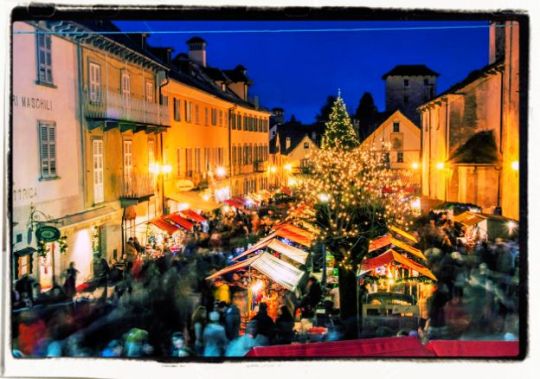
Christmas markets in Italy and Germany
Römerberg is one of Germany's oldest Christmas markets. In the weeks leading up to Christmas, hundreds of wooden huts move to the historic old town squares surrounding Frankfurt’s Römerberg. The market stalls are set in the midst of the area’s timber-framed houses, contrasting with the glitzy high-rises of the financial district in the background.
As one of Germany’s oldest Christmas markets, with records suggesting it dates back as far as 1393, the market at Römerberg is a sure-fire was to enjoy some traditional goodies and Christmas spirit. Handmade trinkets and crafts make for fantastic souvenirs and gifts, and the local culinary specials – from hot apple wine to Bethmännchen marzipan cookies – will give you the full Franconian experience.
Leipzig Christmas market. More than 300 exhibitors set up shop on Leipzig's market square each year. Just an hour west of Dresden and its famous Striezelmarkt, visitors are discovering Leipzig’s lesser-known Old Town Christmas market. More than 300 exhibitors set up shop on the market square and in the nearby streets and transform the city centre with lights and evergreen garlands. Vendors in the Old Town offer a mix of traditional German handicrafts and food, while Augustusplatz is where the Christmas flair goes international with Finnish products, Swiss cheese and South Tyrolian decor. The musical entertainment on stage is just as varied, and younger guests can explore the fairy-tale forest or meet Santa Claus.
The Heidelberg Christmas market is one of the most romantic you’ll find in Germany. Heidelberg enchants visitors year-round with its quaint Old Town, picturesque river views and the imposing ruins of a 13th-century castle towering over the city. Towards the end of November, the market squares fill with wooden huts and stalls illuminated by twinkling lights. The Heidelberg Christmas market is one of the most romantic you’ll find in Germany, and your afternoon is best spent shopping for handcrafted gifts, souvenirs and decor, indulging in Glühwein and going for a spin on the Karlsplatz ice rink.

German Christmas markets
In Heidelberg you will feel like you are in a Christmas fairytale: the Heidelberg Christmas Market with its 130 stalls is one of the most beautiful markets in Germany! Combine - gladly together with your professional, friendly and even Christmas-loving guide - the visit of the Advent performances with a stroll through the old town, and let yourself be explained the numerous sights.
Christmas markets spring up across Hamburg in November and December, encompassing a wide range of themes. The main Christmas market, Weihnachtsmarkt, takes place around a colossal Christmas tree next to the City Hall. While Weihnachtsmarkt has a feel akin to the traditional Christmas markets found in town squares throughout Germany, Hamburg’s central Mönckebergbrunnen shopping district transforms into a magical Christmas forest to host the Winterwald (‘winter forest’) market. If you’re looking for a Christmas market experience with a difference, Hamburg also hosts a range of smaller themed markets, including the Saint Pauli festival – the world’s first erotic Christmas market.
The spa city of Aachen, set close to Germany’s border with Belgium and the Netherlands, turns into a winter wonderland in the run-up to Christmas. The quaint streets and squares surrounding the City Hall and cathedral are decked out with coloured lights and around 120 stalls, selling everything from mulled wine to handmade wooden toys. Kids will love the festive carousel, while friends back home will enjoy an authentic souvenir of Aachener Printen - a type of Lebkuchen local to Aachen, made with caramelised sugar and spices.
https://www.youtube.com/watch?v=HRKMDyx1VY8
https://www.youtube.com/watch?v=PYIZ_MrWwaU
Read also our other posts on Christmas ;
Christmas markets in England ;
Christmas markets in America ;
Christmas short stories ;
Ella Gray A Christmas short story ;
Christmas quotes ;
60 great Christmas quotes ;
Christmas tree origin and quotes ;
Traditional Christmas Carols ;
Christmas jokes ;
Christmas cracker jokes ;
Funny Christmas Stories ;
Amusing Christmas stories ;
Christmas food ;
Christmas thoughts ;
Christmas story ;
Christmas in Italy ;
Christmas holidays ;
Christmas songs ;
Christmas poems ;
An Essay on Christmas by Chesterton ;
Read the full article
#Aosta#Austria#Berlin#Bolzano#Christmas#Cologne#Como#cribs#Dresden#Europe#festival#Florence#food#Germany#gifts#Hamburg#Heidelberg#Italy#markets#Milan#Naples#Nuremberg#presents#SanGregorioArmeno#shopping#tradition#Trentino#Trento#Verona
0 notes
Photo
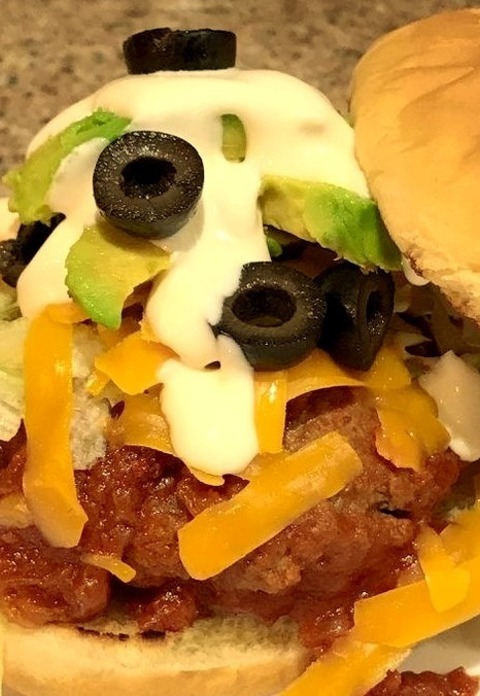
Sarah's Stewed Taco Burgers Recipe
These beef burgers from south of the border are stewed in a taco-seasoned tomato and onion sauce, creating a burger that is incredibly moist.
0 notes
Photo
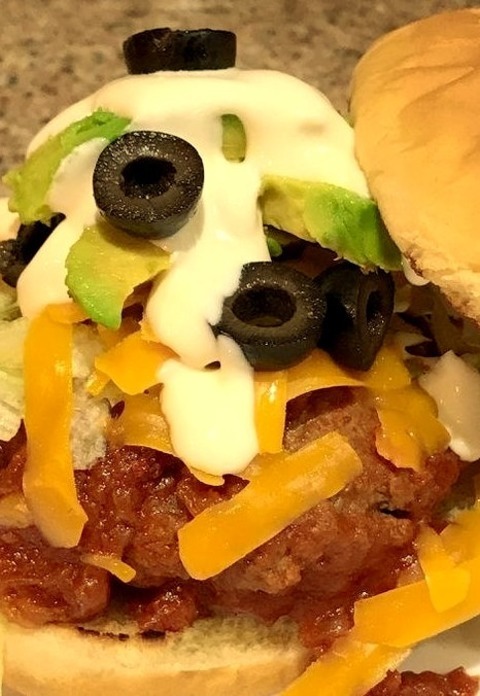
Burger - Sarah's Stewed Taco Burgers
These south of the border beef burgers are stewed in a taco seasoned tomato and onion sauce, resulting in a super-moist burger.
0 notes
Text
India Foodservice Market: Exploring the Rich Culinary Landscape
Introduction
India's foodservice market is a vibrant and diverse landscape that reflects the country's rich culinary heritage. With a population of over 1.3 billion and a growing middle class, the foodservice industry in India has witnessed remarkable growth over the years. This article explores the various aspects of India's foodservice market, from traditional cuisine to the impact of technology and the future of dining.
The Growth of the Foodservice Industry in India
Rise of Quick-Service Restaurants (QSRs)
Quick-Service Restaurants, popularly known as QSRs, have become an integral part of India's urban culture. The convenience, affordability, and quick turnaround time offered by QSRs have made them a preferred choice for the busy, modern Indian consumer.
Evolution of Fine Dining Establishments
Alongside the rise of QSRs, fine dining establishments have also gained prominence in India. These restaurants cater to the discerning palates of customers who seek a sophisticated dining experience.
Proliferation of Food Trucks
Food trucks have captured the imagination of food lovers in India. These mobile eateries offer a diverse range of cuisines and are particularly popular at food festivals and events.
Impact of Technology on Foodservice
The foodservice industry in India has embraced technology to enhance customer experience. Mobile apps for food ordering, contactless payments, and AI-driven personalized recommendations have revolutionized the dining experience.
Traditional Indian Cuisine: A Delightful Journey
India's culinary heritage is a tapestry of flavors, influenced by various regions and cultures.
Regional Diversity in Indian Food
Each region in India boasts a unique culinary identity, with diverse ingredients and cooking techniques. From the fiery curries of the North to the coconut-infused delicacies of the South, Indian cuisine is a delightful journey of tastes and aromas.
Spice and Flavour in Indian Cooking
Spices are the soul of Indian cooking. The artful blend of aromatic spices creates dishes that are a treat for both the taste buds and the senses.
Street Food Culture: An Integral Part of India's Foodservice
Street food is an essential aspect of India's foodservice culture. From the ubiquitous chaat to the savory vada pav, the streets of India offer a plethora of mouthwatering delights.
Fusion Cuisine: The Marriage of Traditional and Global Flavors
Indian cuisine has not remained confined to its borders but has embraced global influences, giving rise to fusion cuisine.
The Popularity of Indo-Chinese Cuisine
Indo-Chinese cuisine, a fusion of Indian and Chinese flavors, has gained immense popularity among Indians. Dishes like Hakka noodles and Manchurian have become staples in many Indian households.
Western Influence on Indian Food
Western cuisine has also made its mark in India, with dishes like burgers, pizzas, and pasta being widely enjoyed by the youth.
Emerging Trends in Fusion Food
As India's culinary landscape continues to evolve, innovative chefs are experimenting with diverse flavors, resulting in exciting fusion dishes.
The Growing Demand for Health and Sustainability
With increasing health awareness, consumers in India are seeking healthier and more sustainable food options.
The Rise of Vegan and Vegetarian Options
The demand for plant-based and vegetarian dishes has surged, driven by health and ethical considerations.
Organic and Locally Sourced Ingredients
Restaurants are increasingly sourcing organic and locally produced ingredients to offer fresher and healthier meals to customers.
The Role of Foodservice in Promoting Sustainability
Restaurants are actively adopting sustainable practices, such as reducing food waste and implementing eco-friendly packaging, to minimize their environmental impact.
Food Delivery Services: The Changing Landscape of Food Consumption
The rise of food delivery services has transformed the way Indians consume food.
The Dominance of Online Food Delivery Platforms
Online food delivery platforms have witnessed unprecedented growth in recent years, making it easy for customers to order their favorite meals from the comfort of their homes.
Challenges and Opportunities in Food Delivery
While food delivery services have brought convenience, they also face challenges such as logistics and ensuring food quality during transit.
The Impact of COVID-19 on India's Foodservice Industry
The COVID-19 pandemic had a profound impact on India's foodservice industry.
Adapting to the Pandemic: Contactless Dining
To ensure safety, many restaurants adopted contactless dining solutions, including digital menus and touchless payments.
Shift in Consumer Behavior
The pandemic prompted changes in consumer behavior, with an increased focus on hygiene and health.
Resilience and Recovery of the Foodservice Sector
Despite challenges, the foodservice industry showcased resilience and adaptability, bouncing back from the setbacks caused by the pandemic.

The Future of India's Foodservice Market
The future of India's foodservice market looks promising, with exciting trends on the horizon.
Embracing Technology for Enhanced Customer Experience
Technology will continue to play a crucial role in enhancing the overall dining experience, from online reservations to personalized meal suggestions.
Leveraging Data Analytics for Personalization
Data analytics will enable restaurants to better understand customer preferences and offer tailored dining experiences.
Innovations Shaping the Future of Dining
From augmented reality menus to robotic chefs, innovative technologies will redefine the way people dine in the future.
For more insights into the India foodservice market forecast, download a free report sample
0 notes